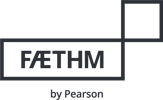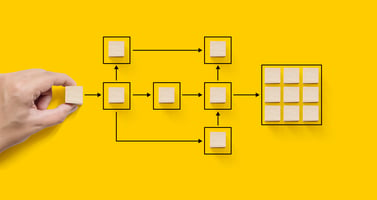Workforce Planning is one of the most important activities you can perform as an HR or Talent...
Building a Culture of Excellence: Lessons from Top Performers
Foster a culture of excellence by learning from your high-perfomring employees. Unlock strategies for identifying high performers, fostering growth and driving organizational success. Here's how you can culvtivate a top-performing workorce.

Building a Culture of Excellence: Lessons from Top Performers
Did you know that the top 5% of employees produce 25% of a firm’s output? In today's competitive market, hiring and talent development programs that focus on high performance are no longer optional for businesses that want to succeed.
But top-performing employees are more than just individual stars – they're the foundation for a culture of excellence. By understanding the skills and traits that set these high performers apart, organizational leaders can cultivate a workplace environment where exceptional performance becomes the norm.
Top talent benefits employers in other ways as well. Companies that analyze the traits driving organizational performance can strategically replicate them throughout their workforce. Establishing a data-driven talent management strategy supported by strong learning and development (L&D) programs helps organizations make the most of these valuable assets.
The Cultural Impact of High Performers
A high-performing employee consistently exceeds expectations in their role, demonstrating qualities such as problem-solving prowess, self-motivation and effective collaboration.
Just as a catalyst speeds up a chemical reaction, top performers help shape a high-performance culture that energizes the entire workforce. Culture counts for retention and other important metrics: Engaged employees are 59% less likely to look for a job elsewhere.
Here's how top performers influence workplace culture:
- Modeling excellence: They embody the organization’s values, establishing a benchmark for behavior that motivates their colleagues.
- Sharing knowledge: Top performers elevate others by sharing expertise, mentoring colleagues and creating a collaborative learning environment.
- Driving innovation: Their willingness to embrace challenges and think outside the box sparks innovation across teams.
Strategies for Identifying and Replicating Top Talent
Identifying top traits is similar to how sports teams scout for promising athletes – they look for a combination of skills, potential and the right mindset.
By identifying top talent within their ranks, companies can leverage strategies to improve retention rates and recognize high performers for their contributions. In addition, organizations that understand high-performer traits and skills can replicate those across the enterprise.
Strategic workforce planning solutions can pinpoint these skills and behaviors, informing hiring and development strategies. Companies can use these tools to:
- Leverage skills data: New platforms using artificial intelligence (AI) analyze large-scale data sets from sources like performance assessments, job descriptions, and learning management systems. This analysis can identify employee strengths and make predictive recommendations for growth.
- Measure capabilities: Role assessments develop a data-driven profile of employee and job candidates’ abilities, personality and future potential. Companies can mine this data to uncover the skills, traits and behaviors common among high performers.
- Enhance learning: Technology to track the effectiveness of talent development initiatives is another way to identify skills and helps organizations amplify the most impactful upskilling initiatives to replicate the skills of top talent.
High-performing Teams Need High-performing Talent Development
To cascade high performance across the organization, companies need robust talent development programs.
The top L&D programs focus on recognizing and rewarding achievement. Online learning programs paired with digital credentials offer a flexible way for employees to engage in upskilling training initiatives, with digital badges to publicly acknowledge employee accomplishments.
Similar to how a great coach creates a custom workout plan based on an athlete's strengths and goals, strong programs tailor training opportunities based on individual skills data – 93% of high-performing organizations say personalized learning plans are more effective. From an employee perspective, 94% of workers would stay longer at a company if it invested in their career development.
The return on investment (ROI) of a powerful talent development program is clear: companies with a strong learning culture enjoy 17% more profit than their peers, and companies that provide professional development opportunities have a 34% higher retention rate than those that don’t.
How High Performers Drive Organizational Success
Investing in the identification and development of top performers is a strategic activity with far-reaching benefits:
- Improving organizational performance: Developing high performers can yield financial performance improvements. Research indicates that a high performer can be 400% more productive than the average performer.
- Managing low and average performers: Understanding top talent traits helps in identifying organizational performance gaps, which can lead to targeted improvements.
- Enhancing employee engagement: Inspired by high performers, employees feel more motivated and likely to go the extra mile.
- Providing a competitive edge: A culture that fosters excellence attracts additional top performers, giving organizations a long-term advantage.
- Fostering continuous improvement: Regularly benchmarking the workforce cultivates adaptability and continuous improvement.
Workforce Solutions to Inform Strategic Workforce Planning
Building a culture of excellence requires a proactive approach. By understanding the impact of high performers, strategizing to identify their defining qualities, and investing in individualized talent development, organizations unlock their full potential and ensure long-term success.
Connected solutions like Faethm, Pearson TalentLens, and Credly provide robust skill analytics that align workforce planning, assessment, and development with strategic business goals. Together, they provide visibility into skill gaps and predict what skills an organization will need to stay competitive. They also provide tools to upskill and reskill employees and accurately assess candidates for hiring and promotion.
Ready to unlock people-powered growth?



/Tech%20Roles/Unravel%20Tech%20Skills%20Gap_Blog%20Feautre%20Image.png?height=200&name=Unravel%20Tech%20Skills%20Gap_Blog%20Feautre%20Image.png)